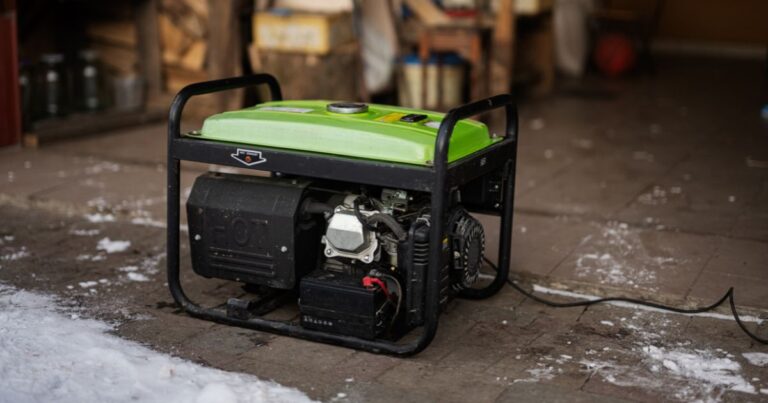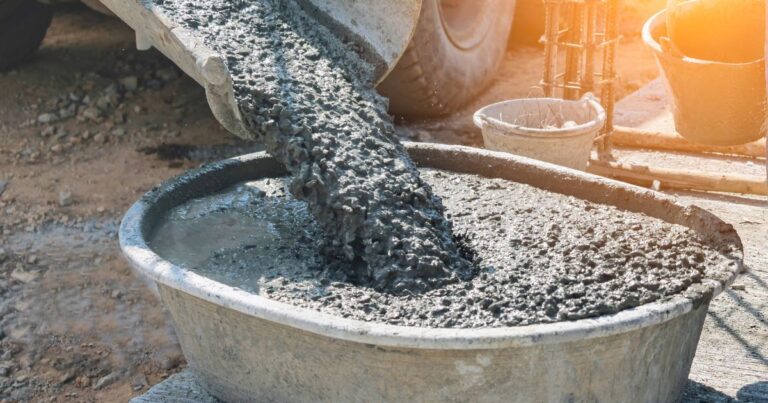If you live in a rural or suburban area without access to municipal sewer systems, chances are you’re relying on a septic system. While these systems are effective and environmentally friendly, they require careful planning, especially when it comes to choosing the right septic tank size. If your tank is too small, you could face messy backups, system failures, and expensive repairs.
Fortunately, you don’t have to guess. Our free Septic Tank Size Calculator helps you estimate the right size for your household in minutes, based on real-world usage factors like daily water consumption, number of bedrooms, and more.
Septic Tank Size Calculator
Recommended Septic Tank Size
Tank Size: 0 gallons
Suggested Material: Concrete
Retention Time: 2 days
Maintenance Tips:
- Get the tank pumped every 3-5 years.
- Avoid putting non-biodegradable items in the system.
- Check for any leaks or odors regularly.
Why Septic Tank Size Matters
Choosing the right septic tank size isn’t just about following regulations—it’s about ensuring the long-term health of your entire wastewater system.
Here’s why tank sizing is critical:
- Prevents Backups: An undersized tank can overflow, sending wastewater back into your sinks, toilets, and bathtubs.
- Protects the Drainfield: If solids move into the drainfield, it can clog and destroy it—often requiring a full system replacement.
- Reduces Maintenance Costs: A properly sized tank will need to be pumped less often, saving money over the years.
- Ensures Regulatory Compliance: Most local codes require a minimum tank size depending on your home’s size and water use.
- Supports Healthy Living: Proper waste treatment keeps your family and environment safe from contamination.
What Factors Determine Septic Tank Size?
1. Daily Water Usage
Water usage is the most accurate way to size a septic tank. The more water your household uses, the larger the tank needs to be to retain wastewater long enough for solids to settle before moving to the drainfield.
Average Daily Usage:
- Per Person: 50–100 gallons
- Bath/Shower: 25–60 gallons
- Dishwasher: 7–50 gallons per load
- Garbage Disposal: 4–6 gallons per day
These numbers can add up quickly, especially in larger households.
2. Number of Bedrooms or Occupants
Many building codes estimate septic tank size based on the number of bedrooms, assuming each bedroom could house at least one person. This helps size the tank conservatively.
| Bedrooms | Minimum Septic Tank Size |
|---|---|
| 1-2 | 750 gallons |
| 3 | 1,000 gallons |
| 4 | 1,200 gallons |
| 5-6 | 1,500 gallons |
3. Fixtures and Appliances
Dishwashers, garbage disposals, and washing machines significantly increase water use. Homes with multiple bathrooms, bathtubs, and high-efficiency appliances may need a larger tank.
4. Tank Material
There are 3 main types of septic tanks:
- Concrete Tanks: Durable and common, but heavy and expensive to install.
- Plastic/Polyethylene Tanks: Lightweight and rust-resistant, but can shift if not properly anchored.
- Fiberglass Tanks: Lightweight and strong, ideal for remote locations.
What Is Retention Time (and Why It’s Important)?
Retention time refers to how long wastewater stays in your septic tank before flowing into the drainfield. This time is critical because it allows:
- Solids to settle at the bottom (forming sludge)
- Grease and oils to rise to the top (forming scum)
- Liquid (effluent) to be processed and safely released
Typical retention time: 24 to 48 hours
If wastewater passes through too quickly (due to a small tank or excess usage), solids may escape into the drainfield, leading to clogging, contamination, or system failure.
That’s why correct sizing based on retention time is crucial—and it’s built into our calculator’s logic.
How Our Septic tank size calculator Works
Our interactive calculator makes septic planning simple. Here’s what it considers:
- Number of People in the Household
- Average Water Usage per Person
- Type of Septic Tank Material
- Number of Bathrooms
- Daily Water Usage Estimate
Behind the Scenes:
Our tool estimates daily water usage and calculates the necessary tank size to ensure the effluent stays in the tank long enough to be processed properly.
It also compares your result to standard guidelines based on the number of bedrooms, ensuring you’re aligned with most regional building codes.
Sample Output from the Septic tank size calculator
Let’s say you have:
- 4 people in the house
- Average of 75 gallons per person/day
- Plastic septic tank
- 2 bathrooms
The calculator would recommend:
- Tank Size Needed: 1,200 gallons
- Daily Usage: 300 gallons
- Bedrooms Estimate Comparison: 1,200 gallons is ideal for 4 bedrooms
- Recommended Pumping: Every 3-4 years
- Tank Type Selected: Plastic Tank (Lightweight and corrosion-resistant)
The result is displayed in an attractive result card with clear visuals, so you instantly understand what’s needed.
Did You Know?
Skipping septic maintenance can cost $10,000+ in drainfield replacement.
It only costs about $300–$500 to pump a tank. That’s 20x cheaper than fixing a failed system.
The average septic system lifespan is 20–40 years, but improper tank sizing can reduce this dramatically.
Planning Your Drainfield (Bonus Tips)
Once you’ve sized your septic tank properly, make sure your drainfield can handle the load. Here are some tips:
- Avoid building anything over the drainfield
- Keep vehicles off the area
- Don’t plant trees near the drainfield—roots can clog pipes
- Ensure good drainage away from the field
- Make your septic lid accessible for easy pumping
Tips to Reduce Water Usage and Tank Load
You can reduce septic tank stress with a few small changes:
- Fix leaky faucets and toilets
- Use high-efficiency appliances
- Spread out laundry loads over the week
- Avoid flushing wipes, paper towels, or grease
- Limit use of garbage disposal
How Often Should You Pump Your Tank?
| Household Size | Tank Size | Pumping Frequency |
|---|---|---|
| 2 people | 1,000 gal | Every 5 years |
| 4 people | 1,200 gal | Every 3-4 years |
| 6 people | 1,500 gal | Every 2-3 years |
If you don’t pump regularly, solids will build up, reducing retention time and eventually clogging the drainfield.
Who Should Use This Septic tank size calculator?
This tool is ideal for:
- New homeowners in rural areas
- Contractors and builders planning septic systems
- Real estate investors evaluating properties
- Environmental health officials
- Home inspectors and plumbers
- Anyone unsure when to pump their tank
Advantages of Using Our Septic tank size calculator
- Dynamic calculation based on your input
- Mobile-friendly design
- Accurate and standards-based sizing
- Beautiful results layout
- Includes retention time explanation
- Helps you plan maintenance and avoid failure
Try the Septic tank size calculator Now
👉 [Click here to use the free Septic tank size calculator]
Don’t guess—calculate! Avoid costly septic repairs and extend your system’s lifespan by finding the perfect tank size today.
Final Thoughts
Septic systems are essential for millions of households, but they only work well when properly designed and maintained. Choosing the right tank size isn’t just about capacity—it’s about safety, efficiency, and long-term savings.
Thanks to our easy-to-use Septic tank size calculator, you can take the guesswork out of the equation and make a smart decision backed by data. Whether you’re building a new home or managing your existing system, this tool is a must-have.
15 FAQs On Septic Tank Size Calculator
-
What is a septic tank size calculator?
A septic tank size calculator is a tool that helps homeowners and builders estimate the appropriate size of a septic tank based on daily water usage, number of residents, bathrooms, and other factors.
-
Why is selecting the right septic tank size important?
Choosing the right size prevents system overflows, reduces maintenance costs, protects your drainfield, and ensures efficient waste processing.
-
What information do I need to use the calculator?
You’ll typically need to know:
Number of people in the household
Average daily water usage
Number of bathrooms
Type of tank material (optional) -
How does the calculator determine tank size?
It calculates total daily wastewater generation and matches it with standard retention time and septic tank sizing guidelines to recommend a tank in gallons.
-
What is retention time and why is it considered?
Retention time is the amount of time wastewater stays in the tank. It allows solids to settle and scum to rise, ensuring only liquid enters the drainfield. The calculator ensures enough volume for at least 24–48 hours of retention time.
-
Is this calculator suitable for both residential and commercial use?
The current version is designed primarily for residential use. For commercial setups, it’s best to consult an environmental or plumbing professional.
-
How often should a septic tank be pumped?
Typically every 3 to 5 years, depending on usage and tank size. Larger households or smaller tanks may require more frequent pumping.
-
What happens if the septic tank is too small?
An undersized tank can overflow, cause wastewater backups, damage the drainfield, and lead to costly repairs or health hazards.
-
Can I oversize my septic tank?
Yes, going slightly larger is safer—especially if you plan to expand your household or add more fixtures in the future.
-
Are the calculator results accurate for local building codes?
The calculator follows general guidelines used across many regions. However, always check with your local health or building authority for specific requirements.
-
Does the tank material affect sizing?
While material doesn’t change the required volume, it affects installation, durability, and maintenance. The calculator includes material choice for informational purposes.
-
Can I use this tool for greywater-only systems?
This calculator is designed for standard blackwater and greywater combined systems. For greywater-only systems, usage will be lower, and a separate calculator may be needed.
-
Will the calculator give me pumping frequency suggestions too?
Yes! Along with the recommended tank size, you’ll receive an estimated pumping frequency based on your household size and usage.
-
Can I use this tool on my mobile phone?
Absolutely! The calculator is fully responsive and works smoothly on all smartphones, tablets, and desktop devices.
-
Is this calculator free to use?
Yes, the septic tank size calculator is completely free to use—no registration or payment required.

Niraj Ghanghoriya is a tech-savvy content creator with a passion for building advanced online tools and writing in-depth, user-focused guides. With a strong focus on clarity, engagement, and SEO, he simplifies complex topics to help users make informed decisions.





Awesome https://shorturl.at/2breu
Good https://shorturl.at/2breu